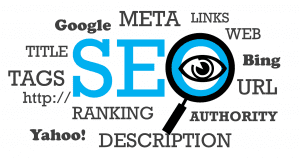What You Need to Know About SEO, SEM, and PPC

Here is what you need to know about all three.
SEO
SEO refers to the practice of optimizing your company’s website for search engines. In other words, the ultimate goal of a good search engine optimization strategy is to rank higher in search results, something that MackMedia can help you to ascertain. SEO is comprised of both on-page and off-page factors. On page factors refer to those aspects of SEO that you can control on your own website, including metadata, user experience (UX), keywords, alt tags, and internal linking. Off-page SEO refers to the aspects of SEO that happen off of your website, but have a direct effect on your website’s rankings. Off page factors include backlinks, domain authority, and social promotion.
PPC
PPC refers to pay per click advertising via search engines. Essentially, you decide on a budget for your campaign and create ads that display on Google or on various social media platforms (most platforms have their own PPC tools and procedures). You only pay a specified amount if and when someone clicks on your ad. Generally, the ad directs the person to your website and drives a specific CTA, often resulting in a conversion or at least commencing/progressing the buyer’s journey. You have the power to set a specific budget per day and/or per month so that it is impossible to overspend.
Many business owners put more effort into PPC because it promises immediate results and automatically takes their ad to the top of the Google search results. Many also opt to make use of PPC because they believe that it positively affects their organic rankings. However, this is a myth. No matter how much you spend on PPC advertising, it will not alter your organic rankings in any way.
SEM
SEM is short for search engine marketing and it is very similar to PPC. Most experts will tell you that PPC is a large part of SEM, but that SEM extends further than just PPC itself. While PPC is generally more focused on paid advertising via search engines, SEM is focused on paid advertising across the digital board, including on third party websites like online directories, Amazon, and YouTube.
At the end of the day, a great digital marketing strategy will encompass SEO, SEM, and PPC in order to generate maximum results and maximum brand awareness. Not sure how to get started? It is always a good idea to consider hiring a professional digital marketing company for assistance if you do not feel secure enough in your own skills. That way, you can reap all of the rewards without having to put in the extra effort.




